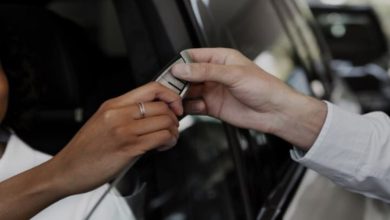Step-by-Step Guide to Applying Vehicle Vinyl Wraps

Vehicle vinyl wraps have revolutionized the way individuals and businesses customize and transform vehicles. These wraps offer versatility in design, and protection for original paintwork, and can serve as powerful advertising tools. Whether you’re looking to give your car a unique look or promote your business on the go, mastering the art of applying a vehicle vinyl wrap is essential. This detailed guide will walk you through the entire process, ensuring you achieve professional-grade results right from your own workspace.
1. Understanding Vehicle Vinyl Wraps
Vehicle vinyl wraps are made from thin, adhesive-backed vinyl that adheres to the surface of a vehicle. They come in a variety of colors, finishes (such as matte, gloss, and satin), and textures (such as carbon fiber or chrome). Apart from aesthetic purposes, vinyl wraps can protect the original paint from minor scratches, UV exposure, and weathering.
2. Gathering Your Supplies
Before you start the application process, it’s crucial to gather all the necessary tools and materials:
- Vehicle Vinyl Wrap: Ensure you have enough vinyl to cover the desired areas of your vehicle. Choose a high-quality wrap suitable for automotive use.
- Cleaning Supplies: Isopropyl alcohol, microfiber cloths, and possibly a degreaser to thoroughly clean the vehicle’s surface.
- Application Tools: Squeegee or application tool designed for vinyl, heat gun or hair dryer for heating the vinyl, and utility knife or razor blades for trimming.
- Workspace Preparation: Find a clean, indoor area with adequate lighting. Avoid working outdoors in extreme temperatures or dusty environments, as these conditions can affect the vinyl’s adhesive properties.
3. Preparing Your Vehicle
Preparing the vehicle surface is crucial for a successful vinyl wrap application:
- Wash the Vehicle: Start by washing the entire vehicle with soap and water to remove dirt, grime, and any wax residues.
- Surface Cleaning: Use isopropyl alcohol to clean the areas where the vinyl will be applied. This step ensures that the surface is free from oils, residues, and contaminants that could affect adhesion.
4. Measuring and Planning
Measure each panel of the vehicle where you intend to apply the vinyl wrap. Take accurate measurements and add a few inches of extra material to accommodate adjustments and trimming. Plan the application process by starting with flat or gently curved surfaces before moving on to more complex areas like bumpers or mirrors.
5. Applying the Vinyl Wrap
Now, let’s dive into the step-by-step process of applying the vinyl wrap:
Step 1: Starting the Application
- Select Your Starting Point: Begin with a manageable section of the vehicle, such as a side panel or hood. Peel back a small portion of the vinyl’s backing and align it with the edge of the vehicle panel.
Step 2: Smoothing and Squeegeeing
- Smooth Application: Use a squeegee to gradually press the vinyl onto the vehicle surface, starting from the center and working outward. Apply firm, even pressure to ensure the vinyl adheres smoothly without air bubbles.
Step 3: Heating and Stretching
- Heat Application: As you work, use a heat gun or hair dryer to gently warm the vinyl. Heat makes the vinyl more flexible, allowing you to stretch it over contours and edges without creasing or tearing.
- Stretching Techniques: When encountering curves or edges, gently stretch the vinyl while applying heat. Use the squeegee to smooth out any wrinkles or bubbles that may form.
Step 4: Trimming and Cutting
- Trimming Excess Vinyl: Once the vinyl is applied to a panel, use a sharp utility knife or razor blade to trim away excess material along edges, seams, and around fixtures like door handles and headlights. Take your time to ensure clean, precise cuts.
6. Final Steps and Inspection
After applying the vinyl to all desired panels, follow these final steps to ensure a professional finish:
- Heat and Seal: Go over the entire vinyl-wrapped surface with a heat gun or hair dryer one more time. This final heating helps the vinyl adhere securely and smooths out any remaining imperfections.
- Edge Sealing: Use the squeegee to press down firmly on all edges and seams to ensure a strong bond and prevent lifting over time.
- Inspect the Finish: Carefully inspect the entire vehicle for any missed air bubbles, wrinkles, or areas needing touch-ups. Address any issues promptly to ensure a flawless finish.
Conclusion
Applying vehicle vinyl wraps requires patience, attention to detail, and practice. Whether you’re enhancing your vehicle’s appearance or using vinyl wraps for commercial purposes, following this comprehensive guide will help you achieve professional-grade results. With each successful application, you’ll gain confidence and skill in handling vinyl wraps, allowing you to explore endless design possibilities and protective benefits for your vehicle.
By mastering the step-by-step process outlined above, you can confidently transform your vehicle with a vinyl wrap. Embrace the opportunity to showcase your style, protect your vehicle’s paintwork, or promote your business with eye-catching graphics. Enjoy the journey of applying a vinyl wrap and the refreshed look it brings to your vehicle!
This detailed guide ensures that each stage—from preparation and application to finishing touches—is covered thoroughly, empowering you to achieve a flawless vinyl wrap application that enhances your vehicle’s aesthetic appeal and durability

